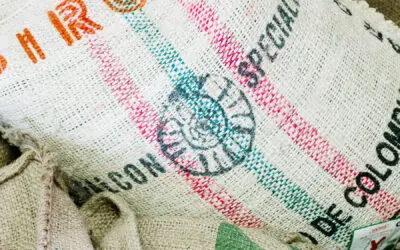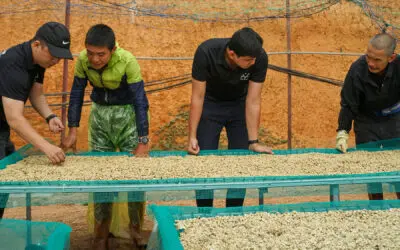Would it surprise you to learn coffee is getting cheaper? Not only that, quality within the coffee business is going up along with your available options.
That may seem counter-intuitive, flying in the face of the common perception but the relative price of a cup of coffee has dropped since Americans could get a cup for less than 20¢ in 1940.
I will get into the details in a moment but first let me stretch credulity further by saying that this quantitative measure did not come at the expense of quality. In fact, coffee quality has risen exponentially, as have the options available to discerning tastes.
So, how could this be, I hear you ask?
People like to say, business isn’t rocket science. Understand supply and demand and everything else just falls into place. Really?
Now, before I get too far out over my skis, let me say that I agree with those people. Business is about supply and demand, and rocket science is notoriously complex (and is also a business). But if supply and demand were the only forces at play, the coffee industry would be squeezing you for every penny on the cup while extorting the supply chain at every turn. Fortunate for us all, worldviews too have changed since the 1940s which has benefited all of society (the coffee industry included).
As much as any and more than most, coffee is an eco-system as well as a business. It requires balance to sustain its health. Supply and demand are two naked forces tethered to and responsible for the wider community. While we compete on price, we also do so on value – qualitative and ethical. So, let me say that while I agree about supply and demand, there are far more complex and nuanced factors attached to those forces for coffee to be and remain a vital industry.
Buddy, can you spare a quarter for a coffee?
So, let’s take a look at real coffee costs related to the consumer price index. First, here is something that probably won’t surprise you: the price of a cup of coffee has gone up since 1940. No surprise there, right?

In 1940, the average cup of coffee set the average American back $0.16. By 2014, that had jumped to $2.70. Had that happened overnight, the coffee market would have crashed, but it wasn’t overnight. The increase was relatively slow up to the early 1970s at which point a certain mermaid swam into the harbour in Seattle and prices started ramping up considerably as you can see from the chart above.
Before you think this is going to be a smackdown of Starbucks, let me add this: Starbucks started business in 1971 advocating things like fair trade practices and qualitative measures in the production of premium beans. This improved life for the farmers, all the way out to the truck stop waitresses and baristas. Every point along the supply chain was scrutinized and held to account for any inefficiencies or overreach. Starbucks was not alone but it was certainly the tall poppy. For these reasons (and many others) we owe them a debt of gratitude (save your “yes, buts” for another discussion). The quality and variety of the coffee you drink today has a lot to do with those transformative efforts.
Meanwhile, it was all the rage in the 80s and 90s to bemoan what was seen as price gouging perpertrated by Mr. Schultz and the growing cabal of trend-surfing cafe owners. It was also worth noting that most of that bitching went on in those same coffee shops on a daily basis, voiced by the same choristers. Evidently, the complainants saw value in the product, despite the wallet drain. After all, they kept coming back day in and day out.
Sure, coffee shops and bistros were taking a supply and demand approach to their pricing but they were also paying more for their product (fair trade), investing more in reliable supply chains and marketing the sh*t out of the coffee culture lifestyle. Don’t blame them for giving you something you want – even if you did not specifically ask for it. Inequities were addressed, efficiencies sought, quality optimized and the market flourished.
Now for the suprising part
As of this writing, 1940 was 84 years ago. The price of a cup of coffee over that period increased by a whopping 587%. Yikes!
But wait: if you adjust for inflation using the consumer price index (CPI), the price of a cup of coffee is actually 0.188% cheaper today than it was during World War II.
Let that sink in for a second.
As expensive as you think a cup of coffee is, consider the advances in farmer equity, the environmental and sustainability gains along with the associated human rights benefits. Add in the product variety enjoyed by consumers, along with the enhanced knowledge and expertise at every level in the supply chain. Our coffee options today are better by magnitudes – a reality we would happily pay more for but for which we are actually paying less in real terms.
So, know this: the price for a simple cup of coffee – be it espresso, drip, pourover, or any other extraction method – is as good as it has ever been. Now, if you want to “confectionize” over top of that simple base, if you need imported syrups, sugars and steam-fluffed dairy or plant milk options, be that on your head and wallet. But don’t blame coffee.
If you enjoyed this (or didn’t), please be sure to take a moment (literally) and share, follow, comment and subscribe to The Coffee Authority Weekly if you haven’t already.. We are growing this community and want you to be a part of it.



0 Comments